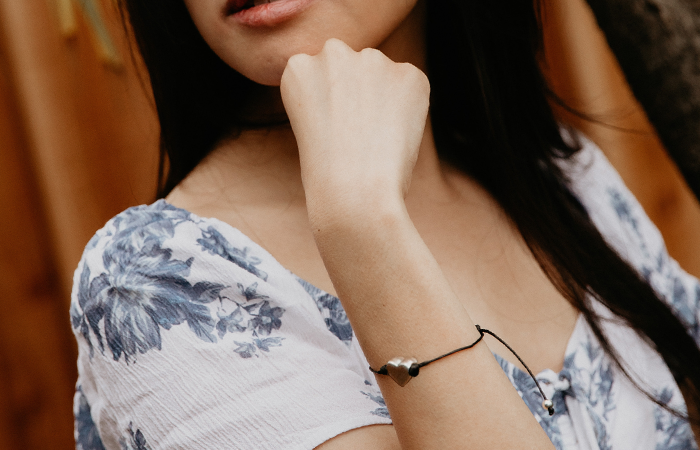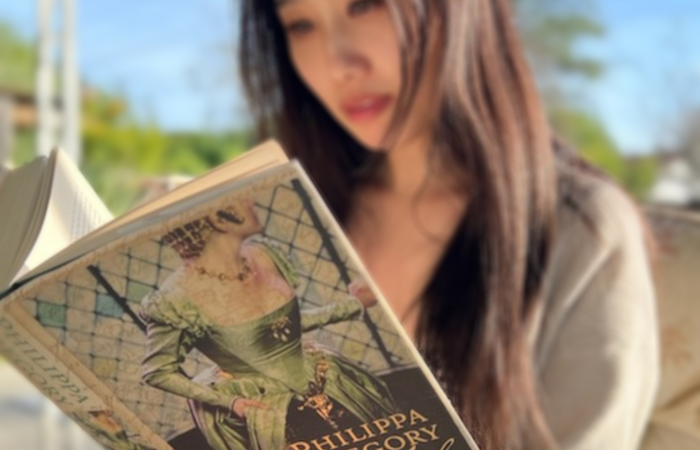
Love and Relativity
From time to time, I’ve had occasion to wonder whether it is possible to numerically quantify our feelings; that is, their intensity, magnitude, depth. I personally think the answer is a resounding “no,” but if we were to assume that such a thing were possible, the implications would be both fascinating and far-reaching — in particular, might it allow us as humans to measure our romantic relationships such that we could make explicit comparisons between them, and then render supposedly rational decisions accordingly?
I find the above a heavy question if for no other reason than it juxtaposes concepts sometimes thought to be antithetical to each other; namely, love and rationality, thinking and feeling, emotion and logic. Of course none of the aforementioned pairings are actually inherently incompatible — indeed, experience has led me personally to believe that love and rationality, and thinking and feeling, and emotion and logic, can and often do go hand in hand — but society tends to present them as being at odds with each other (if only because doing so makes for good media entertainment).
Feelings, Past and Present
Recently, I learned that a friend of mine — let’s call him Andrew, for the sake of convenience — was getting married. I was delighted for him, but was surprised when he told me that while he loved his fiancée, he believed that he had loved a previous partner more, during the time that he and the previous partner were together. To clarify Andrew’s position, he wasn’t stating that he still loved his previous partner (let’s call her Bella); indeed, he was very clear that he only loved his fiancée (let’s call her Caroline). Rather, his point seemed to be more that his feelings for Bella, throughout the duration of their romantic relationship, were perhaps of a greater intensity than his current feelings for Caroline.
I have neither intention nor desire to pass judgment on the nature of Andrew’s relationship in it of itself, but I do think that it raises fascinating questions in the abstract. Andrew’s situation, and his views concerning it, intrigue me because — based on my understanding — he is essentially saying (at least implicitly) that he loves Caroline enough to marry her and want to spend the rest of his life with her; but also, he does not love her as passionately, deeply, madly, what have you, as he knows that he, in theory, has the capacity to. This is, of course, my own interpretation of Andrew’s position, and it may well be that he would disagree with the characterization. Whether or not it is an accurate assessment, I think my interpretation raises an interesting question:
Is it logical to continue seeing someone that makes you happier than you are by yourself, but not as happy as you know you have the theoretical capacity to be?
An Illustration
To better describe the above quandary, I find that the use of an illustrative hypothetical is very helpful. However, some familiarity with the economic theory of utility is necessary in order to fully understand the hypothetical, so I (attempt to) give a brief explanation of it below.
Now, I feel the need to issue a disclaimer with respect to both the illustration and my rather slapdash explanation of utility theory below — kindly note that numbers are not my forte; and that I have only a rather dated bachelor’s degree in economics that, even in its theoretical prime, was largely unused. That said, anyone more mathematically inclined, please do let me know of any mistakes I’ve made!
The Economic Theory of Utility
Utility theory in economics harkens back to the earlier question of whether we can somehow quantify our feelings, more specifically, our happiness. In economics, utility loosely refers to the degree of pleasure or satisfaction that one derives from some sort of consumption or economic activity. A utility function is often used to describe a preference for one set of goods, X, versus another set of goods, Y, and may be expressed as something like:
U(X,Y) = X^\alpha Y^\beta.
For our purposes, however, it is sufficient that the utility, or “satisfaction,” derived from a particular activity is expressed as a simple numeric value, for example:
U(eating \space ice \space cream) = 5
Which here essentially means that the satisfaction I derive from eating ice cream is 5 utils (units of happiness, basically), or phrased differently, the act of consuming ice cream puts me at a utility level of 5.
The Adventures of O, A, and B
I will use three people — Person O, our main character, for all intents and purposes; Person A, a romantic interest of Person O; and Person B, another (subsequent) romantic interest of Person O (belated spoiler alert, I suppose, but alas, Person O and Person A do not work out) — and evaluate their utility levels based on three distinct situations, defined as follows:
O: Person O is not romantically attached
A: Person O is romantically attached to Person A
B: Person O is romantically attached to Person B
The notation here is sloppy on my part — I understand that it is in poor form for me to use the same letter to represent both a situation and a person. But I think that for our very limited purposes, doing so makes the illustration less tedious later, as the identically-named situation and person are inextricably intertwined.
Suppose that when Person O is not romantically attached — that is, as a single lady — she enjoys a utility level of 10:
U(O) = 10
Suppose, then, that Person O engages in a romantic relationship with Person A, and that being with them brings her to a utility level of 20. We are assuming that being in a relationship with Person A (or any person, for the sake of this example) only increases Person O’s utility level; otherwise, supposedly, she would simply choose to remain romantically unattached:
U(A) = 20
That’s all well and good for Person O, but alas, suppose she and Person A ultimately end their romantic relationship. Perhaps after enduring the initial emotional turmoil that the standard breakup entails, Person O’s utility level would eventually return to 10:
U(O) = 10
Suppose, now, that Person O eventually meets and becomes romantically attached to Person B. Again, let’s assume that being in a relationship with Person B only raises Person O’s utility, in this case to 15 such that:
U(B) = 15
This, I think, is where opinions can and will differ as to what Person O’s optimal course of action is: more specifically, does it make sense for Person O to remain with Person B, even though she knows she has the capacity to be happier with some other partner (as demonstrated by her past relationship with Person A)? Or does it make more sense for Person O to remain romantically unattached, presumably until she encounters another partner, i.e. some yet undiscovered Person C, who can make her at least as happy as she was with Person A?
At first blush, it seems the answer logically has to be that Person O should continue seeing Person B; after all, U(B) > U(O). But reflexively — at least for me personally — this doesn’t seem quite right. To wit, a more threshed-out exploration of the facts reveals that the issue is both far more nuanced and subjective than it first appears, and that there is really no one correct answer.
Finding the Optimal Choice
Recall that the central issue of our hypothetical is that being with Person B makes Person O happier than she is by herself, but less happy than she was when she was with Person A, such that:
U(A)> U(B) > U(O)
It is seemingly rational for Person O to remain with Person B, if only because U(B) > U(O). But my question is, should it matter that Person O was happier with Person A, such that U(A) > U(B)? Note that for all intents and purposes, Person A is gone, out of the picture, removed entirely — there is no hope of reconciliation, so it isn’t as if Person O can simply return to Person A and by effect that higher utility level of 20.
To that end, I think the issue becomes whether the simple knowledge that she has the capacity to be happier with a partner than she is now, bothers Person O; that is, whether such knowledge detracts from Person O’s current utility. It may, or it may not, or it may bother Person O but not enough to dissuade her from remaining with Person B — really, the possibilities are endless. But let’s suppose that it does bother Person O, knowing that there is theoretically someone out there, whether Person A or some yet undiscovered Person C, who can make her happier than she is now.
Indeed, we can assign the act of so knowing a utility value, but because it makes Person O unhappy, it would be a negative value. For our purposes, we can refer to such negative utility as disutility, which is essentially the opposite of utility — where utility describes the pleasure or satisfaction a person derives from a certain activity, disutility describes the displeasure or dissatisfaction a person derives from a certain activity. Greater disutility (that is, greater displeasure) is associated with a larger numeric value in absolute terms: for example, I would say that an activity bringing me a disutility of -10, is of a greater disutility than an activity bringing me a disutility of -5, even though this may seem counterintuitive (since ‑5 > ‑10).
Returning to our illustration, let’s suppose the disutility that Person O derives from knowing she could potentially be happier is -6 such that:
U(knowing) = ‑6
Recall that when Person O was unbothered by such knowledge, the utility she derived from being with Person B was 15. But now, operating under the assumption that Person O is so bothered, we can incorporate the relevant disutility to define a new situation: B^{\prime}, wherein Person O is romantically attached to Person B, but derives negative utility from knowing that she could theoretically be happier with someone else (in common parlance, from knowing that she is “settling,” so to speak). Recalling that U(knowing) = ‑6 and U(B) = 15, I think that U(B^{\prime}) would probably represent an amalgam of those circumstances such that:
U(B^{\prime}) = 9
In such a case, it would indeed make more sense for Person O to remain romantically unattached, rather than to continue seeing Person B, since U(O) > U(B^{\prime}). Critically, though, if I had assigned the act of knowing a smaller disutility value (in absolute terms), the outcome could have been very different. For example, if I instead set U(knowing) = ‑4, then U(B^{\prime}) = 11, and it would again be logical for Person O to remain with Person B.
The Individuality of Experience
As demonstrated above, what the optimal course of action is — that is, whether or not to commit to a person who makes you happier than you are on your own, but less happy than you demonstrably know you could be — is doomed to be a subjective inquiry, one entirely dependent on the person. Some people will derive significant disutility from knowing that they are not as happy as they could be. Others won’t care, and their optimal course of action will differ accordingly.
To that end, I am of the mind that experience, even a purely physical experience, is a uniquely individual phenomenon. Imagine that I pinch you on the cheek; what you might perceive as a pinprick of pain, another might register as a punch to the face. This is a dramatic, exaggerated example, of course: it is unlikely that there would be such discrepancy in how two individuals perceive pain — especially if both are what we might call people of “reasonable firmness,” a standard used in legal fiction — but my point is more that perception is a uniquely individual sensation; no two people will ever share exactly the same experience, even in response to the same stimulus. Differences may be trivial, but differences they are nonetheless.
Accordingly, I would posit that we all experience and thus register love differently. Some people will be more like Andrew — able to implicitly quantify the intensity of their feelings, and thus view their relationships relative to each other. I personally empathize more with a slightly more existential approach: that is, feelings either are or aren’t, in an almost binary sense, and cannot be measured in a way that lends itself easily to comparison.
The illustration involving Persons O, A, and B is a gross simplification of real-world circumstances and feelings, of course. There are countless other factors that a real person would take into account when deciding whether to commit to some partner that makes them happy, but not as happy as they know they could be — when I presented this scenario to my friends, for example, nearly all of them asked, “How old is Person O?”, suggesting that timing and age are just some of the manifold factors a person may consider in evaluating the situation. Others asked whether utility could increase over time; that is, whether feelings could change and grow, which is certainly possible and perhaps even probable (for the limited purposes of the above illustration, however, I operated under the assumption that they did not).
I think, then, that the only conclusion has to be that there is simply no universally optimal choice in matters of the heart. It’s a romantic notion — the suggestion that feelings transcend quantification, that love can defy logic (or perhaps, equivalently, that logic can defy love) — but one that I believe must be true given how individually tailored, how unique to the individual, the phenomena of experience and perception are.
The content of this post constitutes an expression purely of my personal opinion and conjecture, and accordingly, is intended only to entertain rather than to inform or instruct. If you see any errors, please *****@*******ol.me”>let me know.


Micah Ivey
May 1, 2022 at 4:07 pmThis is brilliant! What a thoughtful and emotional piece. This should be published.
Jubilee
May 2, 2022 at 1:09 am♥♥♥
zoritoler imol
September 3, 2025 at 6:39 amThis really answered my problem, thank you!
binance
September 4, 2025 at 12:17 amYour article helped me a lot, is there any more related content? Thanks!
binance
September 6, 2025 at 9:30 pmYour article helped me a lot, is there any more related content? Thanks!
binance sign up
September 9, 2025 at 11:04 amYour point of view caught my eye and was very interesting. Thanks. I have a question for you.
binance signup bonus
September 18, 2025 at 1:44 amThank you for your sharing. I am worried that I lack creative ideas. It is your article that makes me full of hope. Thank you. But, I have a question, can you help me?
Prijava
September 18, 2025 at 3:36 pmThank you for your sharing. I am worried that I lack creative ideas. It is your article that makes me full of hope. Thank you. But, I have a question, can you help me?
binance account
September 25, 2025 at 5:26 pmYour point of view caught my eye and was very interesting. Thanks. I have a question for you.
^Inregistrare Binance US
September 27, 2025 at 7:08 amThanks for sharing. I read many of your blog posts, cool, your blog is very good.
gratis binance-konto
September 27, 2025 at 8:29 amThanks for sharing. I read many of your blog posts, cool, your blog is very good.
Mendaftar di www.binance.com
September 28, 2025 at 2:34 pmThanks for sharing. I read many of your blog posts, cool, your blog is very good.
Sign Up
October 4, 2025 at 12:47 pmCan you be more specific about the content of your article? After reading it, I still have some doubts. Hope you can help me.
skapa ett binance-konto
October 7, 2025 at 12:51 amThank you for your sharing. I am worried that I lack creative ideas. It is your article that makes me full of hope. Thank you. But, I have a question, can you help me?
binance US-registrera
October 26, 2025 at 5:49 amThanks for sharing. I read many of your blog posts, cool, your blog is very good.
Binance推荐代码
November 17, 2025 at 9:05 pmCan you be more specific about the content of your article? After reading it, I still have some doubts. Hope you can help me.